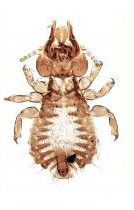Lice, Lice Baby: Convergent Evolution in bird lice

This video is a great example of some fascinating evolutionary biology. Illinois Natural History Survey ornithologist Kevin Johnson describes his research on the history of feather lice. Anyone who works with birds knows they are lousy–as in, usually covered in lice.
But how did all those lice evolve? Did they share a common louse ancestor, and then diverge as their bird hosts diverged? Bird winglice from a parrot look a lot like bird wing lice on a duck–but those are very different and unrelated hosts. What does that tell us about the history of lice?
You can read the paper this video is based on here:
Johnson, K.P., Shreve, S.M. & Smith, V.S. (2012). Repeated adaptive divergence of microhabitat specialization in avian feather lice, BMC Biology, 10 (1) DOI: 10.1186/1741-7007-10-52
(Looking for a text transcript of the video; you can get most of the content text here)





Kudos on the Vanilla Ice reference. Convergent evolution: It’s kinda like how Mark Wahlberg and Justin Timberlake both found ways to survive as film actors when their pop music niches ran dry. Poor, Vanilla Ice however…he failed to adapt successfully (as anyone who watched ‘Cool As Ice’ can attest to).
COTW for that awesome, awesome pop culture explanation of convergent evolution.
This is very cool! Which I say as I try to deal with the fleas from my son’s cat after he moved backed home during the summer. My ankles look like battlefield.
Help!
How do I delete my login for this site? I’ve asked but no response. I want out.
Skeptical women are great, but this site is no longer of interest for me.
The easiest thing to do is stop visiting the site. Problem solved.